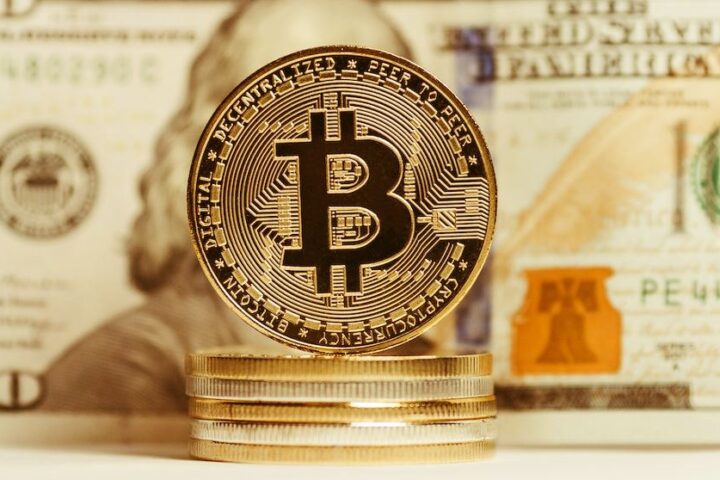In this article, we’ll look at how blockchain technology is transforming trading platforms.
Trading platforms are a type of software that allows customers to trade financial assets like stocks and bonds. Examples include the New York Stock Exchange (NYSE), Nasdaq, Eurex, and the Hong Kong Stock Exchange.
Blockchain technology is a decentralized digital ledger (or database) that records transactions between two parties in a verifiable way without needing any third-party involvement. It provides an immutable record of these transactions, which are linked together chronologically in what is called blocks or “chains” using cryptography.
What Is Blockchain Technology?
Blockchain network that keeps track of a growing list of documents known as blocks. Each block includes a timestamp as well as a link to the preceding block. A blockchain usually gets administered by a peer-to-peer network that follows a protocol for verifying new blocks.
Blockchains are resistant to data modification. Once data gets recorded, the contents in any one block cannot be changed without affecting all the blocks. It needs network majority agreement (i.e., greater than 50 percent ).
What Is Blockchain Technology
The blockchain is a decentralized ledger. It gets a shared, distributed ledger. It’s made up of blocks that contain transactions and digital records, which are linked together (hence the name “blockchain”) to form a chain.
The blockchain is also often referred to as a “chain of blocks” or “chain of transactions” because these blocks contain many individual transactions that have occurred in the past, linking them together into one cohesive unit—the “blockchain” itself!
A block can be described as an individual record within a larger dataset. It contains information about who sent or received money from whom at what time and how much was sent/received for each transaction.
These blocks are then grouped sequentially in chronological order to create this continuous chain structure where each new block references its predecessor by including its hash value within its header data structure (linked below).
This means every transaction ever made on any cryptocurrency currency (whether Bitcoin or Litecoin) will always be accessible through an unalterable record. Cryptography technology allows anyone with access rights over their wallet address details such as public keys (e-mail addresses) or private keys (password strings).
It is what drives most of the tokens on the cryptocurrency markets. The same is also leading to the increase of cryptocurrency prices and helping create cryptocurrency value for the traders.
The Connection Between Platforms
Trading platforms are centralized systems. This means that the data stored in a trading platform gets owned and controlled by one system. In contrast, blockchain technology uses a distributed ledger to record transactions and maintain records of financial assets. In other words, blockchain uses cryptography to verify transactions through nodes that simultaneously work together to form one chain (hence “blockchain”).
The first use case of Blockchain Technology was Bitcoin which got created by Satoshi Nakamoto in 2008 as open-source software for creating decentralized digital currency without any central authority controlling it. With this invention, you can send money instantly with no need for middlemen or third parties involved.
These can otherwise include banks or credit card companies, so you don’t have any fees when transferring money between two people anywhere in the world without needing permission from anyone else besides yourself!
Benefits of Blockchain Technology
Blockchain technology can improve trading platforms in a variety of ways, including:
Decreased costs. Blockchain eliminates the need for middlemen and external clearinghouses to conduct transactions between user accounts, reducing costs.
For example, it takes a couple of seconds to send money from one bank account to another via blockchain. However, if you were to use your bank’s services instead of the blockchain network (which would be the case if the bank decided not to implement this technology).
Your transaction would take several days or even longer due to various delays and other factors such as holidays. Since many financial institutions have been slow at adopting this technology into their systems—and some still haven’t done so at all—you could end up paying hundreds or thousands of dollars per year just in transfer fees!
When compared with traditional methods like sending checks through snail mail or waiting weeks for wire transfers from overseas banks (or even across town), cryptocurrency transactions are instant.
They get facilitated over a peer-to-peer network rather than having an intermediary act as a middleman between two parties trying to make an exchange happen.
Disadvantages of Blockchain Technology
As with any technology, there are certain disadvantages to using blockchain for trading platforms. Blockchain is a decentralized technology, and it is very difficult to control. In addition, the price of using blockchain for trading platforms is higher than other technologies like cloud computing or servers.
Moreover, blockchain has its limitations, and it cannot solve all problems that are facing the trading platform industry at present.
Though these are some drawbacks of using blockchain for trading platforms but still, this technology has many advantages over traditional methods such as increased speed, transparency, security, etc.
Unlock Value
Blockchain technology can help trading platforms to reduce costs and improve security.
Blockchain technology has the potential to make a large impact on the financial industry, as it offers cost reduction by eliminating intermediaries, making processes more efficient, and reducing operational risk.
The underlying blockchain infrastructure enables a single source of truth in transactions that can get shared among all stakeholders in real-time. This also ensures greater transparency and traceability of transactions, which reduces fraud and money laundering activities.
Since no one institution or party owns a complete copy of the ledger (as it is distributed across multiple nodes), this creates trust among parties for conducting financial transactions without third parties involved.
With the increasing adoption of cryptocurrencies in recent years due to their decentralized nature along with lower transaction fees compared with traditional banking system operations (e.g., credit card payments). Their popularity has surged over conventional payment methods like cash or checks used previously.
Conclusion
Blockchain technology is transforming trading platforms. With the penetration of blockchain in different industries, traders can easily trade cryptocurrencies on exchanges and use smart contracts to automate their trading process. In the future, blockchain will get used by financial institutions to process payments and loans instantly and reduce costs.





